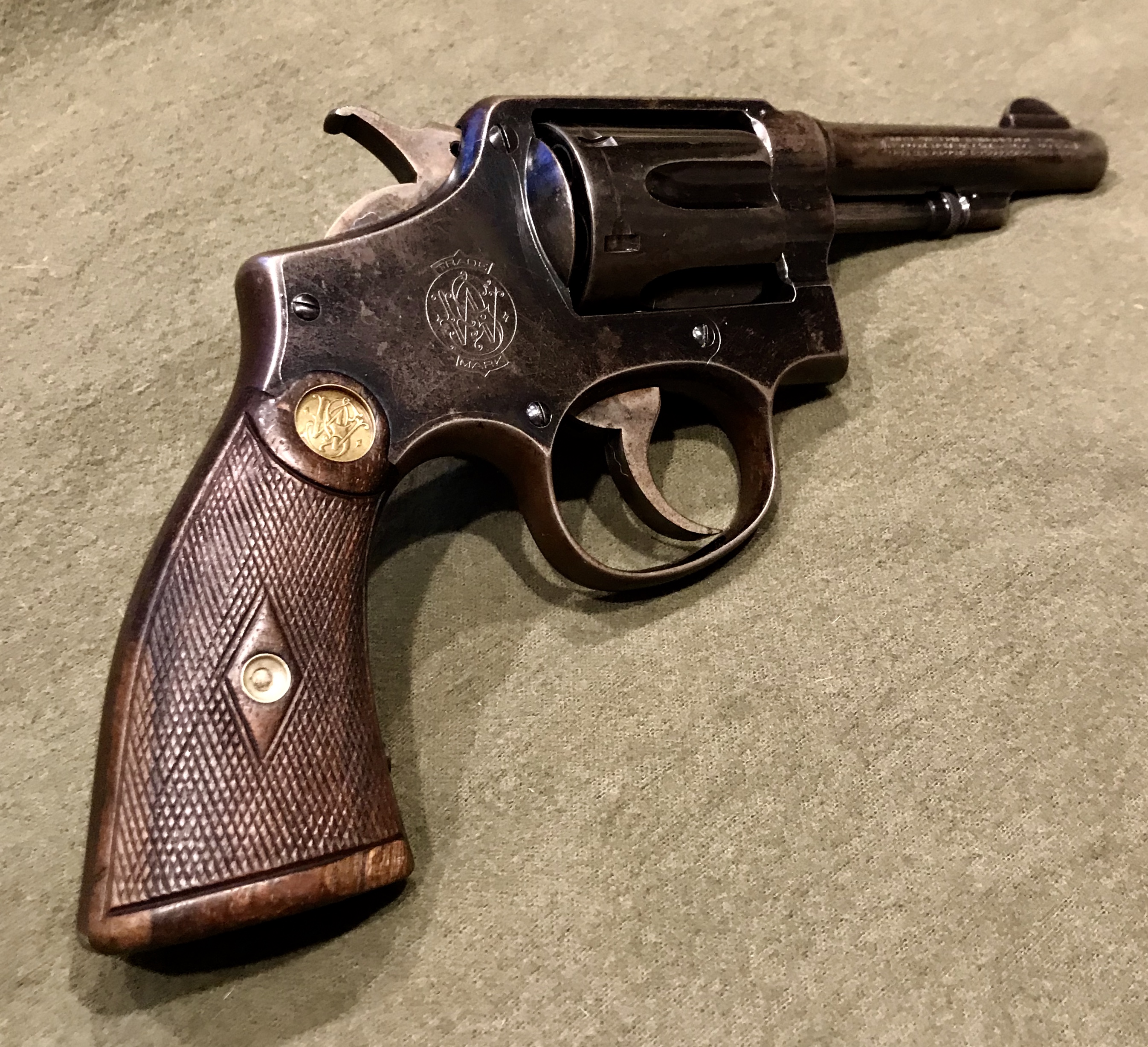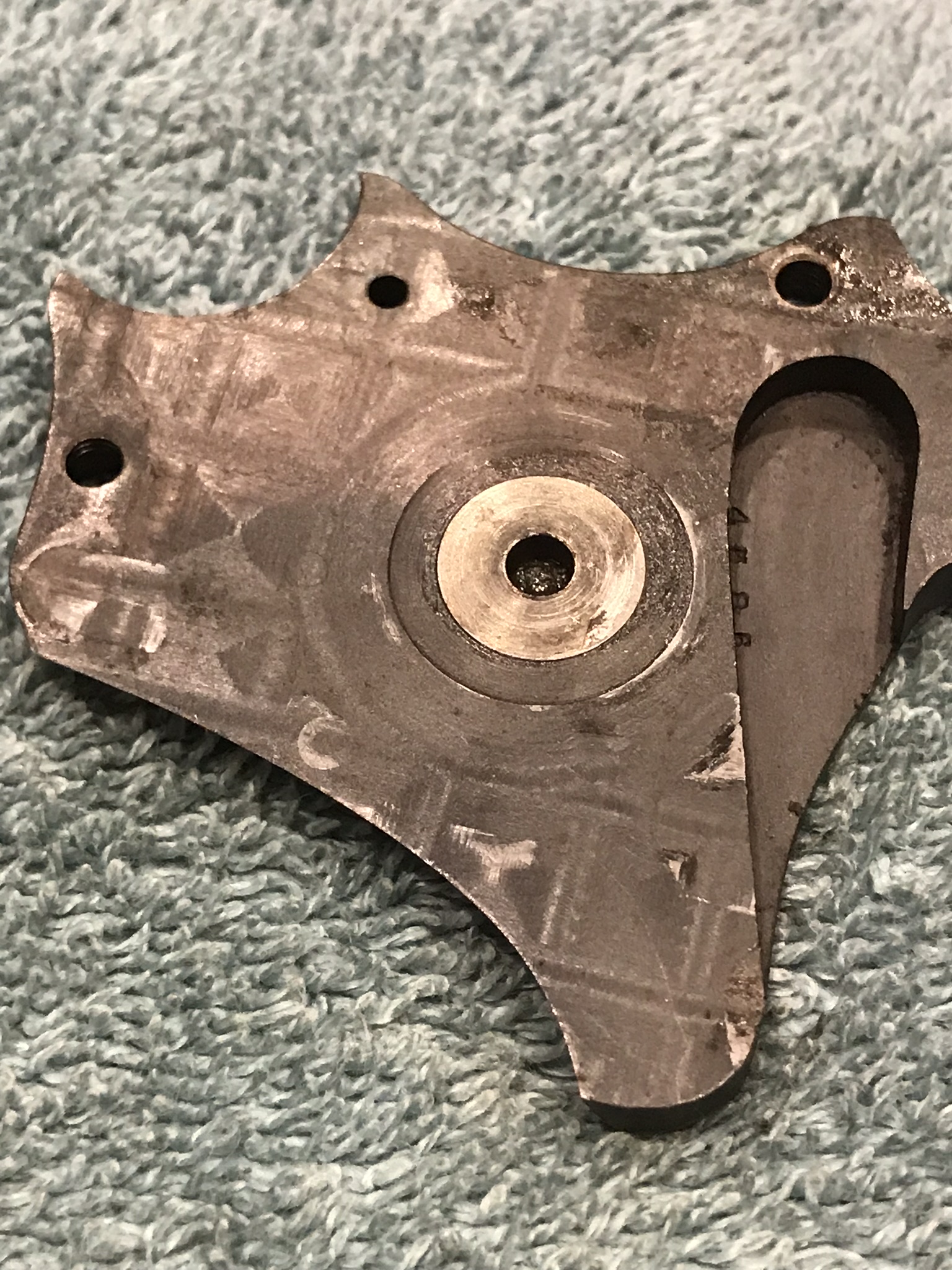How many of you have a favored old handgun, the one that's been well used and likely not as cared for as it deserved? Maybe you still have the holster that came with it?
Here's one of my examples.
The mid 1950s were still pretty gun friendly; most every Western Auto or Feed & Seed or Hardware store also sold guns and ammunition. There were still places even just outside the Big City where a kid could go hunting or plinking without anyone much objecting as long as you always closed and secured a gate if you went through and always asked permission before shooting on someone else's property. Also you needed to understand that farm animals were off limits even if it was just a chicken and if you broke anything you were expected to fix it without even being asked.
The most common guns were a single shot 22 rifle or maybe a single shot 410 shot gun but a 22 LR revolver was also pretty common. Holsters were utilitarian, often flapped leather or canvass surplus that originally would have held a lofty Smith & Wesson and not the Iver Johnson or Harrington & Richardson a kid was more likely to carry.
I was a full teenager now and so could be trusted with a handgun and for just over $20.00 I bought an almost new (1955) H&R Camper. It wasn't the blued 922 but rather the Nickle Coated shiny bright 923. The holster was the classic war (but not sure which war) surplus leather flap one that looked like a dog might have used it as a chew toy but it held the gun and kept it dry even when I got soaked in a summer shower.


The 923 was a nine round 22LR double action revolver. Trigger pull was adult size and in single action crisp but stiff. To load you pulled out the pin and took the whole cylinder out but you could then use the pin to use the built in star ejector. The face of the cylinder was recessed and this was considered a real safety feature in the day.
The old gun is still pretty accurate and fun to shoot. It still gets to go out to Ranch Country to do some plinking on occasion but it no longer even threatens any living things.
So do any of you good folk have an old experienced gun?
Here's one of my examples.
The mid 1950s were still pretty gun friendly; most every Western Auto or Feed & Seed or Hardware store also sold guns and ammunition. There were still places even just outside the Big City where a kid could go hunting or plinking without anyone much objecting as long as you always closed and secured a gate if you went through and always asked permission before shooting on someone else's property. Also you needed to understand that farm animals were off limits even if it was just a chicken and if you broke anything you were expected to fix it without even being asked.
The most common guns were a single shot 22 rifle or maybe a single shot 410 shot gun but a 22 LR revolver was also pretty common. Holsters were utilitarian, often flapped leather or canvass surplus that originally would have held a lofty Smith & Wesson and not the Iver Johnson or Harrington & Richardson a kid was more likely to carry.
I was a full teenager now and so could be trusted with a handgun and for just over $20.00 I bought an almost new (1955) H&R Camper. It wasn't the blued 922 but rather the Nickle Coated shiny bright 923. The holster was the classic war (but not sure which war) surplus leather flap one that looked like a dog might have used it as a chew toy but it held the gun and kept it dry even when I got soaked in a summer shower.


The old gun is still pretty accurate and fun to shoot. It still gets to go out to Ranch Country to do some plinking on occasion but it no longer even threatens any living things.
So do any of you good folk have an old experienced gun?











